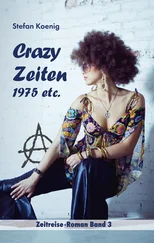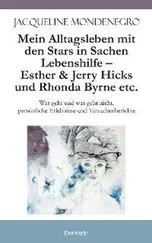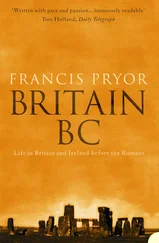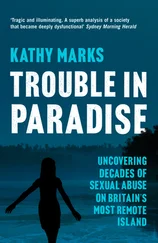I imagine myself back in the King and Keys thirty years ago. It is a few minutes after opening time and Bill Deedes is presenting me with a large glass of single malt. This, I now believe, was not the act of some mischievous old hack trying to prod me down the road to ruin — quite the reverse. He knew that the way to help the young man in front of him survive Fleet Street and its dysfunctional relationship with drink was to strip alcohol of its dark magic and its dubious morality. Scotch at 11am? Chin-chin!
With his classic custodian helmet and simple truncheon, the British bobby is seen internationally as a charming symbol of this country’s nostalgia for the values and headgear of the Victorian era (see ‘S is for Silly Hats’). Tourists from around the world flock to have their photograph taken beside the quaint, familiar form of a policeman on his beat. His slow even plod contrasts with the frantic dash of tooled-up cops elsewhere, a solid reliable pulse setting the tempo for our nation’s soundtrack.
It is not just foreign holidaymakers who love the bobby, of course. The British beat constable is regarded as a national treasure, clothed in the uniform of reassuring tradition and echoing the principles that coincided with imperial supremacy. I have listened to countless speeches from politicians demanding ‘more bobbies on the beat’, a phrase which for many in Britain instantly brings to mind the face of fictional TV cop PC George Dixon, who to this day has as much impact on criminal justice policy as any flesh-and-blood Home Secretary.
Dixon of Dock Green, eponymous hero of a television series that survived two decades from the mid-1950s, is shorthand for old-fashioned common sense, decency and humanity — values associated with a more straightforward age where ordinary coppers could clip mischievous urchins around the ear and, with a salute and a wink, restore order and calm to the streets. But Dixon’s continuing influence stems, not from concern about policing or crime, but something more fundamental. It is about our changed relationship with our neighbours and our neighbourhood.
The original ‘peelers’ or ‘bobbies’ marched out of the station in 1829, shortly after Sir Robert Peel had created the first police force in London. Eight constables were dispatched to independent positions within the local area and ordered to walk around a small network of streets in a regular pattern. According to the instructions written by the capital’s first police commissioner, Sir Charles Rowan, the constable ‘should be able to see every part of his beat at least once in ten minutes or a quarter of an hour’.
However, it quickly became clear that this system of policing was, frankly, rubbish as a crime-fighting tool. Having constables trudging up to twenty miles a night in ill-fitting boots in all weathers cost a fortune and left officers exhausted. If the perception was that it prevented vandalism, prostitution and drunkenness, the reality was that a great many PC Plods were forced to retire early with the entry ‘worn out’ on their pension papers. Home Office research in 1984 revealed how inefficient the foot patrol was at catching criminals: ‘A patrolling police officer could expect to pass within 100 yards of a burglary taking place roughly once every eight years. Even then they may not even realise that the crime is taking place.’
Nevertheless, the bobby on the beat remained the cornerstone of British policing for well over a century because, it was believed, he discouraged potential villains and made the law-abiding feel safer. The uniformed foot patrol was a comforting presence within what was busy public space, pounding the pavement and keeping a trained eye on all that was going on.
Reading George Dixon’s police notebooks from the 1950s to the 1970s, however, would have revealed evidence of a transformation. In his early years patrolling Dock Green, nine out of ten households didn’t own a car. People walked. Within twenty-five years, it was the other way around. Almost everybody drove. They left their front door and were quickly cocooned in their vehicles. On their return home, the risk of having to negotiate an encounter with a neighbour was reduced to a few seconds as they locked the car and briskly headed indoors to be reunited with another piece of technology that was changing the social dynamic — television. In 1951, virtually no one had a TV on Dixon’s beat. By 1971, virtually no one was without access to the telly. Where previously crowds of people would walk to the pictures or the pub in the evening, now they stayed at home to stare at a flickering screen in the comfort of their own front room. It wasn’t the bobby that was changing, it was the beat.
The arrival of the motorcar and the television depopulated the pavement and changed the status of the pedestrian. Towns and cities were redesigned around the needs of the driver, those on foot often forced underground into poorly lit tunnels and intimidating underpasses. The character of urban public space changed from common resource to the habitat of the excluded and the dangerous. ‘Good evenin’ all’ would often have echoed along subterranean walkways without response, save the uncomfortable shuffling of a tramp trying to sleep in a corner. It was the mid-1960s when police chiefs ordered that Plod, too, should get behind the wheel. The retreat of the constable into his radio-equipped rapid response patrol car further changed society’s relationship with the street.
The boundary between private and public might once have been described as the threshold between ‘mine’ and ‘ours’. What Dixon witnessed was the shared tenure of his beat being transferred to a single faceless other. Once, residents would have proudly swept the pavement beyond their front gate. Now, people sweep their front path onto the pavement for someone else to clean up. The amount of litter dropped on our roads has increased five-fold since the 1960s, a simple measure of how respect for our public spaces has been lost.
The British are said to be uncomfortable with continental piazza culture: the ritual occupation of public space by all generations. It is all right for Italian, French or Spanish families to promenade around the town square on a sunny evening, but it would never work in Dock Green. Except that when people talk about the days when they could leave their front doors open, confident that trusted neighbours would be around to keep an eye, or take their evening constitutional without fear of being mugged, they are nostalgic for the days when we also routinely occupied our public spaces.
Britain may complain that the bobby abandoned the beat, but it was the beat that abandoned the bobby. In our search for security we fled the street, and in retreating we ended up feeling less safe. We have tried to restore our confidence with barbed wire, anti-climb paint and a million security cameras but the effect has been to make us even more fearful. I remember filming on an estate in Yorkshire where the central shopping area was dominated by a breezeblock structure prickling with razor wire and CCTV cameras, the entrance reached via a security turnstile. It turned out this was the community library. The more we emphasise the boundary between public and private space, the more vulnerable we feel.
Shared urban environments are a social safety valve, a place for people of all backgrounds to mingle on equal ground. London Mayor Boris Johnson once described public space as ‘the glue that holds a city together’. It is the territory where trust and confidence are forged. When people call for the return of the bobby on the beat, it is both they mean. They want the reassurance they think a greater police presence will bring, but what they really crave is their streets back.
Читать дальше












